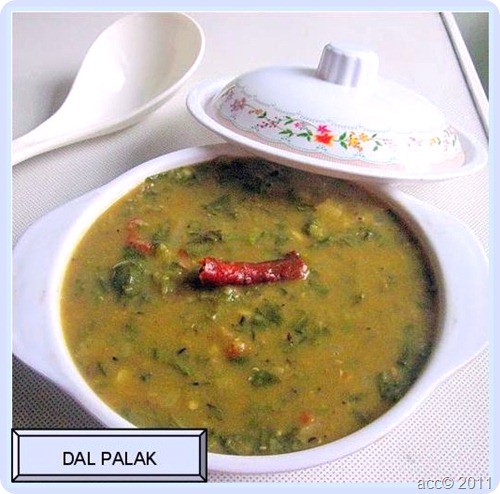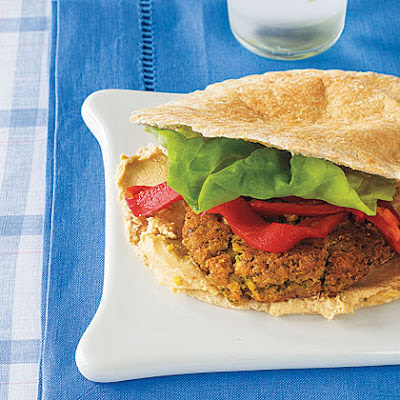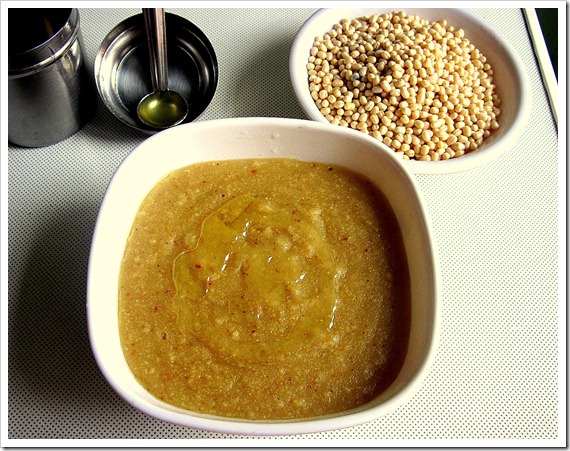Wednesday, May 30, 2012
The Frugal Cook is away
Braised chicory with Roquefort

Having spent the last 10 days in France it's struck me again what a mystery it is that you can't order more vegetable-based dishes in French restaurants. It's not that they don't have the produce. Down in the Languedoc they have gorgeous leeks right now and great bagfuls of chicory which is something you rarely find in the UK - or not at a reasonable price. Yet the only greenery most restaurants seem to offer - and have done for the past umpteen years - is salade de chèvre chaud (grilled goats' cheese salad).
Anyway I took advantage of some very good prices (about €2.50 a kilo) to buy 5 heads of chicory to make a side dish to go with yesterday's roast chicken. This is roughly the recipe.
Braised chicory with Roquefort
Serves 4-6
5-6 heads of chicory
1 tbsp lemon juice
2 tbsp olive oil
20g butter
About 125ml chicken or vegetable stock
50g Roquefort or other blue cheese. Or almost any leftover cheese for that matter - Comté would be good.
Cut the heads of chicory in half lengthwise and remove any damaged outer leaves. Fill a large shallow pan with water, bring to the boil and add the lemon juice to stop the chicory discolouring. Add the chicory, reduce to a simmer and cook for 4-5 minutes then remove with a slotted spoon.
Discard the water from the pan, add the oil and then the butter. Once melted lay the halved chicory heads in the pan and fry until well browned, turning them carefully halfway through so as not to break them up. Lay them cut side upwards in a shallow baking dish, pour over the stock and crumble over the cheese. Cook alongside whatever roast you're cooking for another 10-15 minutes until the cheese is lightly browned and the stock pretty well evaporated.
I also made a dish of leeks vinaigrette for which I posted a recipe on the blog a couple of years ago. Good to be reminded how good it is though and leeks are very tasty at the moment.

Thursday, May 24, 2012
New Italian Cookbooks 2011

Cucina Povera Tuscan Peasant Cooking was sure to strike a chord with me, because I lived in Florence for 6 months. It is written by ex-pat Pamela Sheldon Johns and it shares a way of life, of not wasting anything and eating frugally. In the book you'll meet all kinds of people from Italy who cook and garden and make things from scratch. The recipes are for some things you may already know about like Ribollita and Pappa al Pomodoro (and if you don't, then by all means you need this book) but also more obscure recipes that you are unlikely to encounter in a restaurant.
Recipes you'll want to try include Tuscan Cornmeal, Kale and Bean Soup, Stewed Peppery Beef Cheeks, Farmyard Crostini (finally a use for giblets!) Plum Jam Tart and Ricotta Cake.

The family I lived with in Italy ate very formal meals, I don't remember a single one course meal. But they do exist and that is what Piatto Unico is all about. The book shares hearty, comforting dishes many that are particularly perfect as we head into Winter. Recipes are divided into chapters like Prime-Time Pastas, Minestrone and Other Big, Bountiful Soups and Braises and Stews.
Recipes you'll want to try include: Asparagus Spinach Crepes with Taleggio, Thick Chickpea and Porcini Soup, Escarole, Anchovy and Cheese Salad.

Another noteworthy book is Rustic Italian Food. This is satisfying and lusty food, not fussy food although many of the recipes do take effort and are not just weeknight jobs. It's filled with homemade breads, pastas, salumi, pickles and preserves. They all demand the use of top quality ingredients. It's written by a restaurant chef, but designed for home cooks.
Recipes you'll want to try include: Spaghetti in Parchment with Clams and Scallions, Eggplant Lasagnette Alla Parmigiana, Veal Breast 'al Latte' with Fried Sage, Cold Farro Salad with Crunchy Vegetables
DAL PALAK
I tried this recipe from Mrs. Mallika badrinath's kurma book. It's a nice combination for roti.I made slight changes in the actual recipe according to our taste buds.I googled so many recipes before trying this one but i found most of the recipes used toor dal / moong dal . I used masoor dal as mentioned in the cookbook.Check out the amazing health benefits of masoor dal in kitchen clinic section. U'll surely try this recipe ![]() .
.
INGREDIENTS
To grind
To temper
|
METHOD
Serve with roti.!! Note: If u want to serve this for rice , just omit the cinnamon & cloves and try the same. |
KITCHEN CLINIC
| MASOOR DAL Masoor daal is used in every household to make curries or sambar. It is a very common lentil and easily available as well. Masoor daal cooks very fast and does not need any kind of soaking before cooking it. Even tough people may treat it asa simple lentil; it has many properties which are good for health. People who are purevegetarians can eat this lentil everyday. They will get the same amount of strength that non-vegetarian people have. Many times we see that people complain about having less blood in their body. Doctors recommend some medicines which will increase the blood and red blood cells in the body for such people. Instead of eating those medicines such a person can have curry made of masoor dal twice a week and they would never complain of less blood. This lentil is good as a remedy when a person is facing dysentery problems. Masoor daal is good for the excretory system and helps keeping it clean. It is good for people facing illnesses due to impure blood. Masoor daal reduces the growth of cough in the lungs and helps reduce acidity as well. Soup made of this lentil is given to a patient suffering from fever. It will give strength to the body of the patient as well as keep the blood pure. People who have piles and bleed as lot during excretion should definitely have masoor daal. It will help reduce this problem. Powder made from masoor dal should be used instead of soap for infants and children. This helps restore the moisture in the skin of children. It brings a glow to skin and prevents it from cracking in the winter season. It is used as a face pack when people have very oily skin. It reduces the oil produced from the skin and helps reduce acne and pimples. It also prevents itching of skin. Our daily diet can include a bowl of lentil soup everyday. This will increase the protein content in our body and make us healthy and fit. Masoor dal will also help increase the digestion rate. Many Indian recipes are made using masoor dal. |
Monday, May 21, 2012
http://feedproxy.google.com/~r/SpanishRecipesinpictures/~3/pXXz24SWKhM/llenties-amb-botifarra-blanca.html
Get the rest in my blog! See you there!
Falafel Pita with Tahini Sauce Recipe
The Arabic Food Recipes kitchen (The Home of Delicious Arabic Food Recipes) invites you to try Falafel Pita with Tahini Sauce Recipe. Enjoy the Arabic Cuisine and learn how to make Falafel Pita with Tahini Sauce.
Switch up your lunch routine with a Falafel Pita with Tahini Sauce. Falafels are made with bulgur, garbanzo beans, herbs, and spices. Serve these Middle Eastern sandwiches with homemade Tahani Sauce inside a pita half with lettuce and roasted red peppers.
Yield: Makes 6 servings (serving size: 1 burger, 2 tablespoons tahini mixture)
Ingredients
2/3 cup bulgur
1 (15-ounce) can garbanzo beans, rinsed and drained
1 large egg white
1/2 cup packed fresh parsley leaves
1/4 cup packed fresh mint leaves
1 garlic clove
1/4 teaspoon cayenne pepper
1 teaspoon ground cumin
1/4 teaspoon salt
1/4 teaspoon pepper
1 tablespoon olive oil
1/4 cup tahini
2 tablespoons fresh lemon juice
1/4 cup water
4 cups torn lettuce
1 cup roasted red peppers
6 (6-inch) pitas
Preparation
Cook bulgur according to package directions; drain and set aside to cool.
In a food processor, combine cooked bulgur, garbanzo beans, egg white, parsley, 1/4 mint, garlic, cayenne pepper, cumin, salt, and pepper.
Form mixture into 6 (approximately 3-inch) patties and place on a large plate. Refrigerate until firm (20 minutes).
Heat olive oil in a large nonstick skillet over medium-high heat. Cook falafel burgers until browned and heated through (3 minutes per side).
Transfer to a plate.
Before serving, whisk together tahini, lemon juice, and water in a medium bowl until light and fluffy.
Divide falafel burgers, tahini mixture, lettuce, and roasted red peppers among pitas and serve.
Ellen Kunes and Frances Largeman-Roth, RD, CarbLovers Diet Cookbook, Health
JANUARY 2012
More Arabic Food Recipes:
Crispy Falafel with Yogurt Dip
Falafel in Pita with Yogurt Sauce
Falafel with Tahini Sauce
Falafel Recipe from Scratch
Chickpea fritters (falafel)
Make Best Falafel Balls
Save and share Falafel Pita with Tahini Sauce Recipe
Want to share this recipe with your family and friends? Click the button below to send them an email or save this to your favorite social network.
Sunday, May 20, 2012
California Olive Ranch Extra Virgin Olive Oil

California is producing some very good extra virgin olive oil, some using old European varieties of olives, harvested the old fashioned way, and--some high quality extra virgin olive oil harvested in a very modern way, for a fraction of the price. So how is possible to get high quality extra virgin olive oil at a low price? Last week I visited California Olive Ranch, the largest California olive oil producer, and learned just how they do it.

It all comes down to freshness and quantity. California Olive Ranch plants three varieties, arbequina, arbosana from Spain and koroneiki from Greece. Their olive orchards look nothing like what you may have seen in Europe. The olive trees are pruned into a hedge shape that is harvested mechanically, using a harvester specially developed for shaking the trees to get the olives off without damaging them. Less damage means better quality oil.
Here are some numbers for California Olive Ranch:
Their olive trees grow 6-8 feet high
Trees are planted 5 feet apart
There is 13 feet between each row
There are about 675 trees planted per acre
Each tree yields 7-12 pounds of olives
Only 20% of the olive is oil, 55% is water
12 harvesters run 24 hours a day during harvest season
5,000 acres are owned by the company
5,000 acres are managed by 67 farmers who have long term leases
Each truck holds 66,000 pounds of olives
Each truck is unloaded in 35 minutes

Some more facts:
The tree trimmings are mulched
The ground pits and olives, called pomace, is fed to cattle
California Olive Ranch is using bird boxes and buffer zones to minimize the use of pesticides and tests each batch of olives, and has test plots for organic olives

If you ever get a chance to ride a harvester and see the olives jiggle off the trees I highly recommend it! That I got to share the experience with blogging friends Chef John from Food Wishes, Chrystal Baker from The Duo Dishes, Aleta Watson from The Skillet Chronicles, and Jane Bonacci from The Heritage Cook made it all the more sweet!

Speaking of sweet, all exra virgin olive oil should be a balance of fruity, bitter and pungent. The best way to find your favorite, is to taste them...however...California Olive Ranch uses descriptors like intense and bold and mild to help you find one to your taste.

* If you want the freshest olive oil, known as 'olio nuovo in Italy, sign up to buy California Olive Ranch's Limited Reserve.
* If you like a buttery mild oil without too much bite, look for their basic extra virgin olive oil
* If you like a fruitier variety, try the Arbequina
* The Arbosana is most complex
* The Miller's blend is bold and balanced (and a favorite of some bloggers, food writers and chefs too.)
My thanks to California Olive Ranch for inviting me up to visit during harvest and letting me sample their fresh oils!
ULUTHANKALI / URAD DAL KALI
I hope u all would have tasted this at the time of puberty. Generally grannys used to give this for the teen age girls to make the bones strong.When my paati gave this for me, i hesitated a lot to eat this ![]() .But now i know its importance. Nowadays at this early age, we get pains in joints and back very often.We are not able to bend continuously for sometime.We get pain in spine.This shows the weakness of our bones. So its better to have urad dal in our regular diet to avoid all these problems.Apart from eating idly/dosas and vadas , i feel this is also a good choice of including urad dal in our daily diet..
.But now i know its importance. Nowadays at this early age, we get pains in joints and back very often.We are not able to bend continuously for sometime.We get pain in spine.This shows the weakness of our bones. So its better to have urad dal in our regular diet to avoid all these problems.Apart from eating idly/dosas and vadas , i feel this is also a good choice of including urad dal in our daily diet..
Now coming to the recipe,
INGREDIENTS:
|
METHOD:
- In a kadai ,roast the urad dal till golden yellow. Powder it in a mixie adding cardamom seeds. Store it in an air tight container.
- Now take 4 tbsp of urad dal powder in a bowl and mix 2 cups of water.
- Cook the urad dal for 7-8 mins. It thickens . Stir well for sometime and make sure there are no lumps formed.
- Now add the powdered jaggery and mix well . Keep the fire in low flame. Allow it to boil till the raw smell of jaggery emanates.
- Add the gingely oil and stir well.U'll get a glossy , sliding non sticky kali is ready to njoy ..
Delicious , healthy uluthankali is ready to eat !!
NOTE :
- If u use palm jaggery instead of jaggery , dissolve in water and make a syrup. Strain and use.
KITCHEN CLINIC
| URAD DAL Urad, also referred to as the urad bean, urad, urid, black gram, black lentil or white lentil (Vigna mungo) is a bean grown in southern Asia. It is largely used to make dal from the whole or split, dehusked seeds. Black gram originated in India where it has been in cultivation from ancient times and is one of the most highly prized pulses of India. It has also been introduced to other tropical areas mainly by Indian immigrants. HEALTH BENEFITS & NUTRITION |
Monday, May 14, 2012
http://foodwishes.blogspot.com/
http://feedproxy.google.com/~r/blogspot/sBff/~3/llShd_jcQo4/crazy-basil-peach-black-pepper.html
Note Regarding Self-Rising Flour: As we said in the regular peach cobbler post, it is recommended you go out and get some self-rising flour. You can make it yourself, by adding baking powder and salt to all-purpose flour, but for whatever reason, it just doesn't seem work as well.





